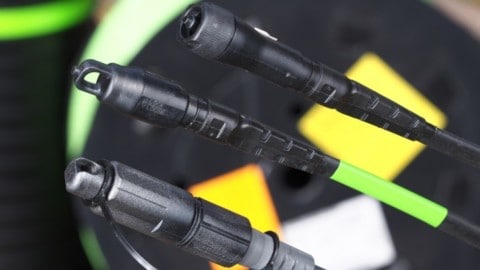Five new Melbourne Water mini hydroelectric power plants have arrived at Dandenong, Wantirna, Mount Waverley, Boronia and Cardinia Creek and are already putting power back into the grid.
The plants were delivered in pre-assembled, self-contained units, offering simple, weather resistant power delivery solutions which can be brought online quickly.
This design delivers increased cost efficiencies compared with seven mini hydro plants installed by Melbourne Water in 2008-2010, as the new self-contained approach allows all construction of the plant to be completed off site prior to delivery.
The power plant package was lowered onto a concrete base strategically positioned adjacent to existing water storage facilities. Water flows through the plant at high pressure, which generates renewable electricity that is harnessed and fed into the electricity supply network.
Once the water has been diverted through the power plant it flows back into our water supply system, which feeds into the residential water supply network across Melbourne.
Melbourne Water Senior Project Manager, Ian Royston, said that the mini-hydro plants were harnessing energy that would otherwise go to waste.
“Using excess pressure inherent in Melbourne Water’s water supply system to generate renewable electricity means we are harnessing a natural, sustainable and reliable source of energy, rather than letting this energy go to waste,” Mr Royston said.
“The use of mini-hydro plants allows our water supply operations to actually contribute more electricity to the grid than they consume.”
Mr Royston said the five plants were already delivering power after being switched progressively over the last few months.
“The five new mini-hydro plants will deliver in excess of 5100 megawatt hours-worth of power per year, enough to power about 1048 homes.
“This will prevent over 5600 tonnes of carbon emissions each year, which is equivalent to taking 2165 cars off the road.
“Now that all five of our new mini hydros are operating, on top of our existing plants, Melbourne Water will generate more than 69,500 megawatt hours of power per year via hydroelectric generation or enough power for more than 14,100 homes. We will be preventing over 75,800 tonnes of carbon dioxide emissions, equivalent to taking more than 29,200 cars off the road.
“Based on last year’s consumption in water supply operations, this would be 13,413 MWh more than consumed.”
All mini hydro plants are fully remote-controlled, operational from off site and seamlessly integrated into Melbourne Water’s supply system to ensure uninterrupted operation.
Melbourne Water’s hydroelectric power plants combine economic and ecological efficiency to produce renewable electricity from sustainable sources.
In addition to this latest suite of innovative and cost-efficient mini hydro plants, Melbourne Water hopes to introduce more mini hydros in the future.

















